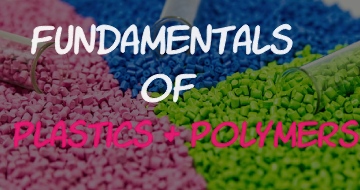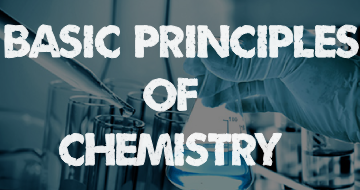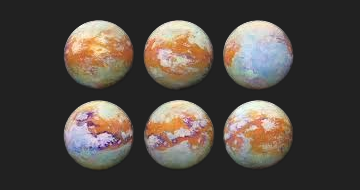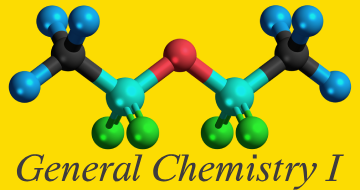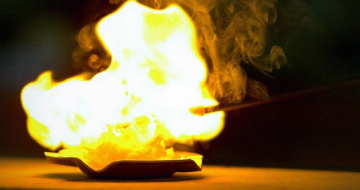Chemistry by Coursera
Skills you will learn!
Curriculum
19 Topics
1.01 Subatomic Particles: Protons Neutrons Electrons and the Nucleus
1.02 Understanding Light
1.03 Quantum Theory Energy and frequency and the photoelectric effect
1.03a Energy of Photon
1.03b Watts to Photons
1.04 Bohr's model of the hydrogen atom
1.05 The dual nature of the electron
1.06 The Heisenberg Uncertainty principle
1.07 Quantum Numbers
1.07a Quantum Numbers
1.08 Explaining Atomic Theory
1.08a Balmer Series
1.09 Atomic Orbitals
1.10 Orbital Diagrams
1.10a QN and Orbital Diagram
1.11 Electron Configuration
1.11a Electron Configuration
Unit 1 Lecture Notes and Practice Problems
Unit 1: The Atom and its Electronic Structure
12 Topics
2.01 Navigating the Periodic Table
2.02 Monoatomic ions and electron configuration
2.02a Electron Configuration of Ions
2.03 Effective Nuclear Charge and atomic and ionic radii
2.03a Isoelectronic and Radii
2.04 Ionization Energy
2.04a Wavelength of light emitted from first excited state
2.04b Hydrogen-like atom of flourine
2.05 Electron Affinity
2.06 Properties of Representative Elements
Unit 2 Lecture Notes and Practice Problems
Unit 2: Periodic Trend
32 Topics
3.01 Elements vs. Compounds
3.02 Types of Chemical Bonds
3.03 Chemical Formulas
3.04 Formula of ionic compounds
3.04a Formula of the compound formed from aluminum and phosphorus
3.04b Formula of the compound formed from ammonium and phosphate
3.05 Nomenclature
3.06 Nomenclature of Ionic Compounds
3.06a IUPAC Name for K2SO4
3.06b IUPAC Name for NiCO3
3.06c Formula for manganese(II) flouride
3.06d IUPAC Name for AgNO3
3.06e Formula for chromium(III) oxide
3.07 Nomenclature of Molecular Compounds
3.07a IUPAC Name for PCl3
3.07b IUPAC Name for N2O
3.07c Formula for boron triflouride
3.08 Nomenclature of Acids
3.09 Molar Mass of Compounds
3.09a Molecular Mass of Al2(Cr2O7)3
3.09b Mass of a sample of vitamin C
3.09c Moles of sucrose within a sugar cube
3.10 Mass percent composition
3.10a Mass percent of chromium
3.10b Mass of CaCl2 containing chlorine
3.11 Relationships from Chemical Formulas
3.11a Mass of H in Ca(H2PO4)2
3.11b Mass of NH3
3.12 Chemical formulas from experimental data
3.12a Empirical formula of a compound containing sulfur and oxygen
Unit 3 Lecture Notes and Practice Problems
Unit 3: Compounds
16 Topics
4.01 Writing Balanced Chemical Equations
4.01a Balance the following equation 1
4.01b Balance the following equation 2
4.02 Aqueous solutions
4.03 Solubility of ionic compounds
4.04 Precipitation Reactions
4.05 Molecular Ionic and Net ionic Equations
4.05a Net ionic equation
4.06 Acid-base reactions
4.07 Oxidation-reduction reactions
4.07a Oxidation Numbers
4.07b Oxidized and Reduced species identification
4.08 Combustion Reactions
4.08a Balance the following equation 3
Unit 4 Lecture Notes and Practice Problems
Unit 4: Reactions
25 Topics
5.01 Stoichiometry of Chemical Reactions: Mole to Mole
5.01a How many Moles of water are produced
5.01b How many Moles of CO2 are produced
5.02 Stoichiometry of Chemical Reactions: Mass Relationships
5.02a How many grams of magnesium are required
5.02b How many grams of magnesium do we need
5.03 Limiting and Excess Reagents
5.04 Limiting and Excess Reagents: Calculations
5.04a How many grams of H2S can be formed
5.04b What mass of excess reactant will remain
5.05 Theoretical & Percent Yields
5.05a Methyl Salicylate is prepared
5.05b A student needs 625 g of zinc sulfide
5.06 Solution Concentration
5.06a Find the mass percentage for a solution prepared
5.06b Find the volume percentage for a solution prepared
5.06c Find the mass/volume percentage for a solution prepared
5.06d What is the molarity of a solution made
5.06e How many grams of LiCl do we need
5.07 Dilution of Solutions
5.07a What is the concentration of the solution
5.08 Solution Stoichiometry
5.08a What volume of HBr is required
Unit 5 Lecture Notes and Practice Problems
Unit 5: Stoichiometry
25 Topics
6.01 Lewis symbols
6.02 Covalent bonds
6.03 Electronegativity
6.04 Lewis Structures Part 1
6.04 Lewis Structures Part 2
6.04a Draw the Lewis structure for H2O
6.04b Draw the Lewis structure for H2CO
6.04c Draw the Lewis structure for CCL4
6.04d Draw the Lewis structure for NH3
6.05 Resonance & Formal Charge
6.05a Determine the formal charg on atoms in NH4+
6.05b Determine the formal charge on atoms in H2CO
6.06 Exceptions to the Octet Rule
6.06a Draw the Lewis structure for I3-
6.06b Draw the Lewis structure for ClF4
6.06c Draw the Lewis structure for XeF4
6.07 VSEPR Part 1
6.07 VSEPR Part 2
6.07a Determine the electron pair and molecular geometries for I3-
6.07b Determine the electron pair and molecular geometries for NH3
6.07c Determine the electron pair and molecular geometries for ICl4-
6.07d Determine the electron pair and molecular geometries for PF5
6.07e Determine the electron pair and molecular geometries for XeF2
Unit 6 Lecture Notes and Practice Problems
Unit 6: Covalent Bonding
18 Topics
7.01 Thermochemistry: Foundational Definitions
7.02 Introduction to Thermodynamics
7.02a Work
7.03 Enthalpy
7.04 Thermochemical Equations
7.04a Heat Produced from Na
7.04b Delta H for aluminum and chlorine
7.05 Enthalpy Change and the First Law of Thermodynamics
7.05a Delta E for acetylene
7.06 Calorimetry
7.06a Rocket Fuel
7.06b Delta H for CaO
7.07 Calculating Enthalpy Change
7.07a Heat capacity of bomb
7.07b Strontium carbonate
Unit 7 Lecture Notes and Practice Problems
Unit 7: Thermochemistry
Final Assessment

Chemistry
